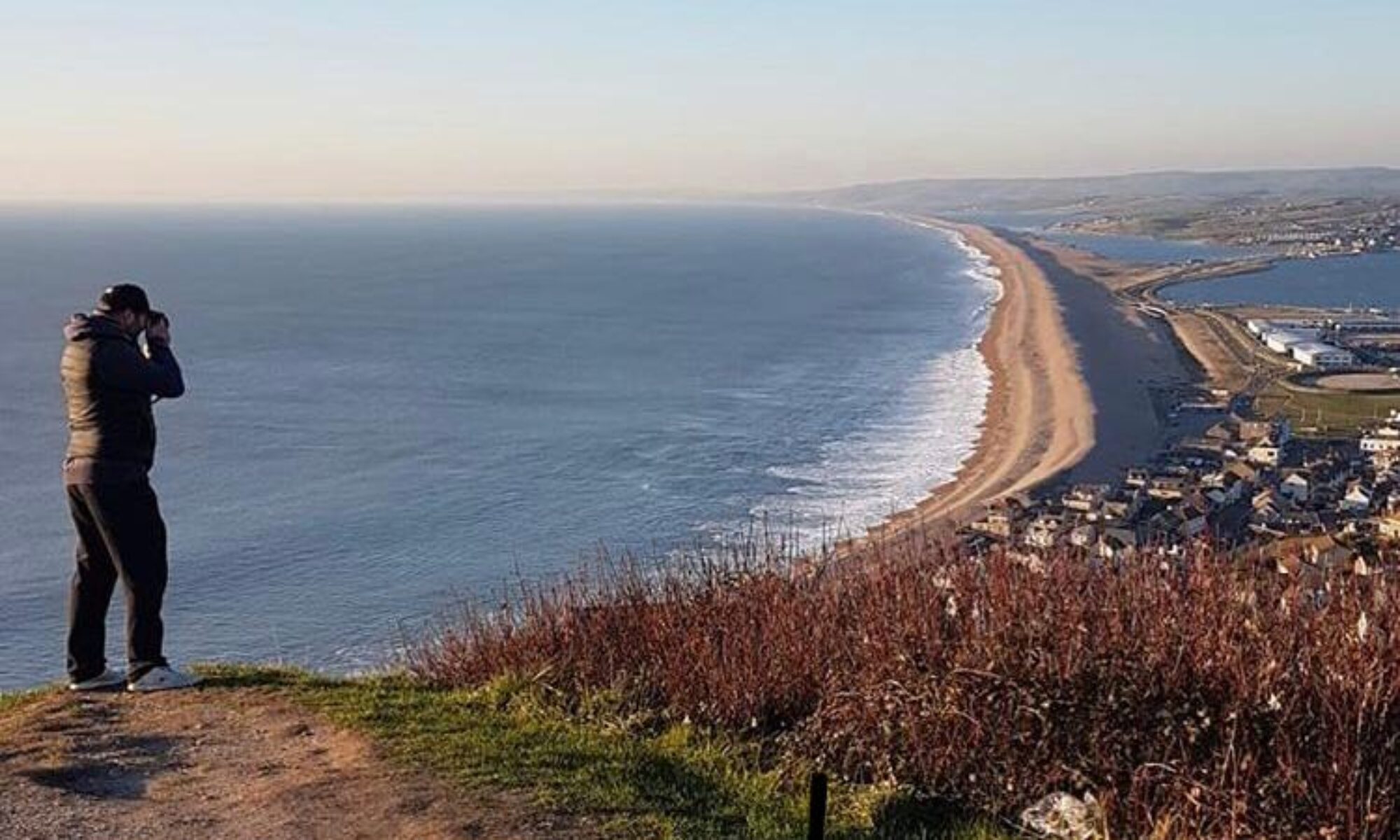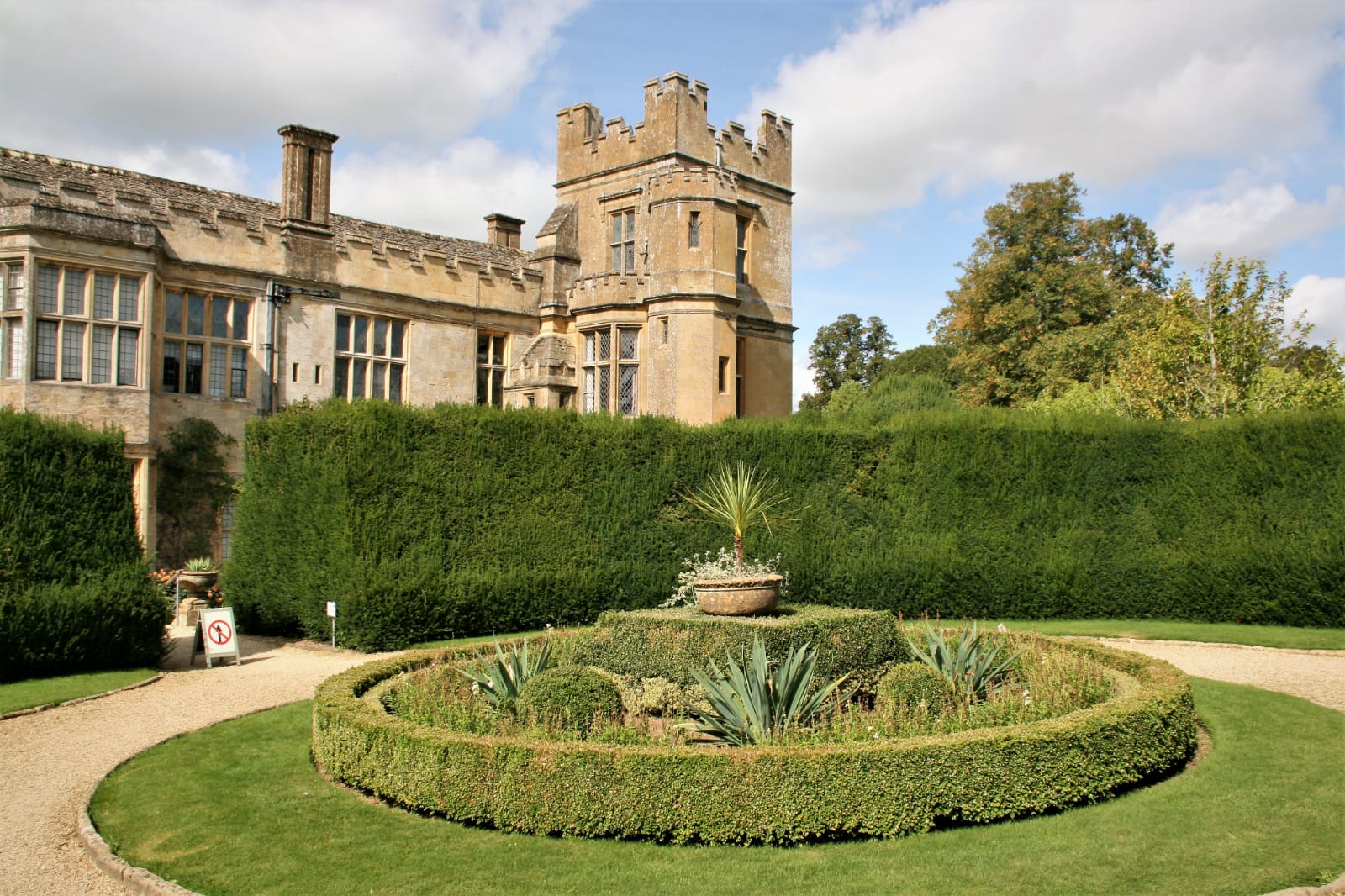Blissfully located in the northern environs of the Cotswolds and a stone’s throw from the town of Winchcombe lies the little known Sudeley castle. Ignore at your loss or take the detour to explore a castle steeped in history!! One can only imagine the grandeur and splendour that Sudeley castle enjoyed in its heyday, as it seems to be a place that was unwanted throughout the centuries. There was a reluctance to retain ownership of it. Its occupants’ loyalty to the king during the Civil War and subsequent lack of caring owners for a couple of centuries mean that it has been left to decay over time. The site now appears to be a combination of a stately home and some castle ruins. Imagination is necessary on any visit! The ramparts and fortifications are long gone; any visitor is left to wonder at the true size of the castle from the ruins that remain. We must be grateful to local glove makers who purchased it and, along with their descendants, ensured its survival.
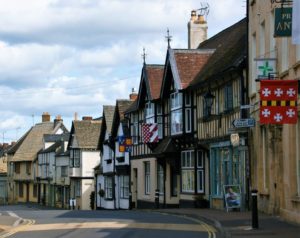
Sudeley Castle is the only castle in the Cotswolds, which is an area of natural beauty in the UK and not to be mistaken with a national park. Much of its beauty and reputation lies in its famous wealthy villages and churches, and people from all over the world are attracted to this quaint region to capture the same images they have seen plastered over the gram. Thankfully, Sudeley Castle seems to be off the beaten track such that it has not been subjected to this racket and has retained its freedom from Instagram fame.
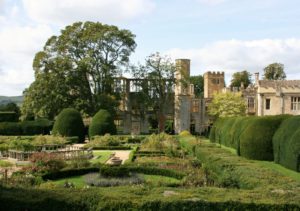
This area of England boasted much wealth throughout the centuries, and this may be seen when visiting the area. The delightful stone-built houses are the subject of photos to adorn chocolate box lids. Sudeley Castle, of course, fed off that wealth. It was established in the valley sitting underneath the wealthy town of Winchcombe. In medieval times, lands and wealth were associated with the church until midway through the 16th century when Henry VIII’s greed took over. The tithe barn that remains on the Sudeley Castle site may have connections with the church and it may well be that local farmers had to give a tithe (tenth) of their crop to the church and this was stored in these barns.
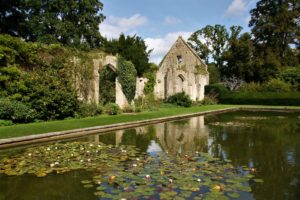
Prior to Henry VIII becoming king, his father, Henry VII, united the Houses of Lancaster and York (their emblems being the famous red and white roses) when he married Elizabeth of York and inaugurated the Tudor dynasty. There had been a massive power struggle that had lasted many a year and culminated in the famous battle of Bosworth, where Richard III was the last/only(?) monarch to be killed on the battlefield in 1485 – ‘My horse, my horse; my kingdom for a horse’; Leicester car park and all that. Richard actually owned the castle a couple of times, as before he was the king, he was known as the Duke of Gloucester. His brother Edward IV had given him Sudeley Castle and estates and the Duke used this castle as a base during the famous battle of Tewkesbury (1471; another beautiful place to visit as there is a nod to those days everywhere). I guess as Richard got more ambitious, he then made the decision to move up north to pursue his dream and exchanged the castle at Sudeley for Richmond castle in Yorkshire (another tremendous place and, again, well worth a visit). No doubt it was a motive of becoming king that led to this move and the subsequent actions. On becoming King Richard III, he acquired the castle for the second time. He set about building the great banqueting hall and state rooms but all that remains today are scattered ruins.
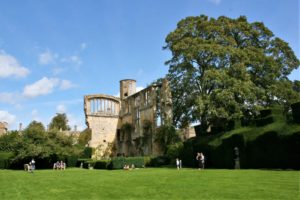
When Henry VII defeated Richard III he became king of the land and set about healing the divisions. One of his main supporters was his uncle Jasper Tudor. Henry rewarded this loyalty with the Sudeley estate. Jasper Tudor died at Christmas time in 1495 with no children and heir and this meant that the castle passed back again to crown. It was perhaps Henry VII’s son and Jasper Tudor’s nephew, Henry VIII, who reigned from 1509-1545, of whom everyone has heard in connection with our history. He wanted to cut ties with Europe (similarities could be made to today) but his desire stemmed largely from a selfish motive to break from the Roman Catholic faith. His legacy, especially that seen in the established Church of England, still plays out in modern Britain with much of our pomp and ceremony associated with the state church.
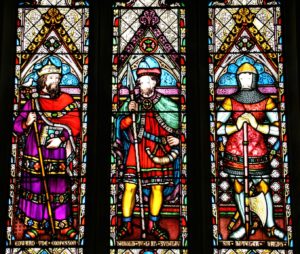
Controversially, Henry manipulated people and circumstances so that he had 6 wives during his 55-year life. Divorce, beheaded, died, divorced, beheaded survived, we all know the riddle. It was his third and sixth wives that perhaps are associated most with this castle. When Henry VIII had Anne Boleyn’s head cut off (he did visit Sudeley with Anne) he had fallen for Jane Seymour and she gave him the son he desperately craved – Edward VI. This meant that the family name (Seymour) grew in strength and power.
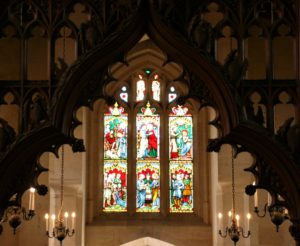
When Henry died, he left a widow – Katherine Parr (she died the year after Henry VIII), and a very young king. The new King’s uncles manoeuvred themselves to positions of strength with the elder (Edward – 1st Duke of Somerset) becoming Lord Protector of England for his young nephew (Edward VI). He granted his younger brother Thomas, the Sudeley estate and Castle, and granted him the titles of Lord Sudeley and later Lord High Admiral. Thomas was an ambitious man, which was also his undoing. He pursued the hand of the dowager queen (the Queen mother) and he married Katherine Parr in April or May 1547 a few months after the death of Henry VIII who had earlier claimed her hand in marriage ahead of Thomas Seymour.
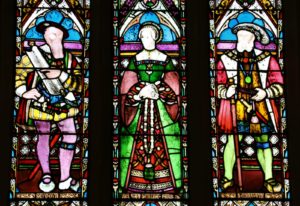
Upon their marriage they moved to Sudeley Castle where Thomas refurbished the castle for his new bride and her massive entourage. Katherine Parr was wealthy of her own accord, a widow prior to marrying the king, she was also granted much wealth from the king on his deathbed. She also carried on caring for princess Elizabeth (latter to become Elizabeth I). She was to die at the tender age of 36 of puerperal fever shortly after giving birth to their daughter Mary, her only child in this her fourth marriage, who herself died at the age of 2. Katherine was laid to rest in the chapel of St Mary (located in the grounds). This makes Sudeley Castle the only private castle in the land to have a queen buried in it. Thomas Seymour was eventually executed for treason, as one of his many crimes was to try to marry Princess Elizabeth and pursue his own powerful agenda. This resulted in the castle passing to the crown and Mary I granted the castle to Sir John Brydges. Finally, Sudeley castle remained in the same family for about a century. During this time Queen Elizabeth visited on a number of occasions, the third and final time was a 3-day party to celebrate the victory over the Spanish armada (Sir Francis Drake and all that).
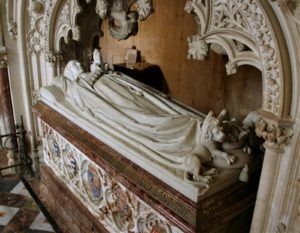
Elizabeth was the last Tudor monarch. She never had an heir, which leads us to the Stewart dynasty, another iconic part of our history as it was during this time that the only Civil War this country has experienced took place. King Charles I believed in the divine right of kings and this brought him into verbal conflict with parliament. This developed into something far uglier. He was ultimately unsuccessful in defending his crown and was beheaded early in 1649. Everybody picked sides, either Royalist or Parliamentarian, and the Brydges (Lord Chandos) backed their king. He left the castle in charge of armed tenants and servants to join the king at Shrewsbury in 1642 and the castle fell into the hands of roundheads (another name for Parliamentarians) who turned the church into a stable and slaughterhouse before Prince Rupert of the Rhine (nephew of Charles I), came back to take it into the Crown’s hands in January 1643. They lost it again in 1644, in the topsy and turvy affair that was the Civil War and Cromwell (he is the subject of another story) decided the castle should be ‘slighted’ or rendered untenable as a military post. This resulted in the castle being left to rot and fall into ruin for 2 centuries.
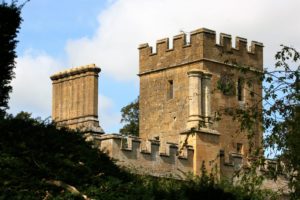
Then in 1837, Sudeley Castle was given a lifeline. The wealthy Worcester glove-makers, brothers John and William Dent, began an ambitious restoration programme. This was continued by the family and means that much of what one sees today is down to their hard work and good will.
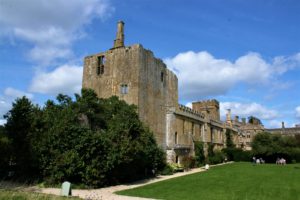
Only a tenth of what was once a wealthy estate of 12,000 acres remains, but what is left leaves much to the imagination and fascination. ‘Sudeley Castle and gardens’ may seem like a misnomer as it appears more stately home than castle. The gardens are charming, there is an iconic church which is home to a famous grave, and a castle that has been battered with Britain’s history. It may not look like a castle (think Windsor or Warwick), but British history has decided that for us. We can appreciate what it is and the stories that it must tell. It is and will always be a favourite of mine.
Sudeley Castle, Tewkesbury, South West England, United Kingdom
